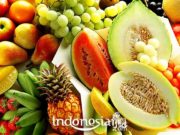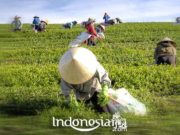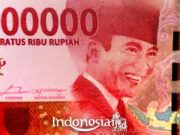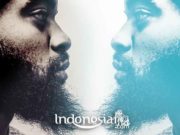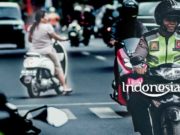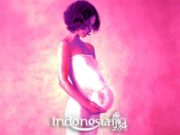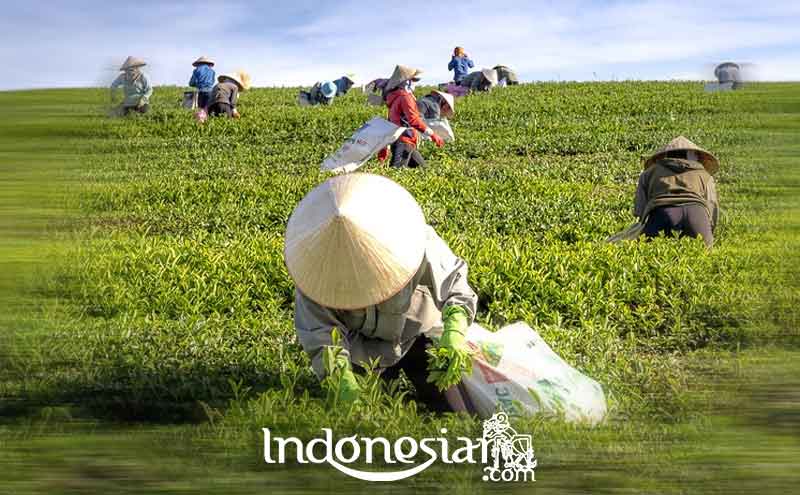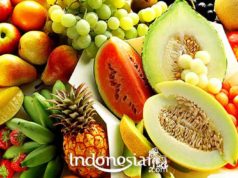How are you loyal readers of articles from Indonesiar.com? Good luck and success. Have you ever visited an area in Indonesia called the province of West Nusa Tenggara? How is the culture of the area? Oh yes, in this article Indonesiar.com will discuss the culture found in the West Southeast province. Read yes!
West Nusa Tenggara or (NTB) is a province in the western part of the Nusa Tenggara Islands in Indonesia. The capital of this province is the city of Mataram, and this province has several cities and districts which of course have their respective cultural diversity and customs. This province has two of the largest islands in the West there is Lombok and in the East there is the island of Sumbawa.
History records that this province was originally part of the Lesser Sunda Province with Singaraja as a capital. However, the Lesser Sunda Province was divided into 3 provinces consisting of Bali, West Nusa Tenggara, and East Nusa Tenggara.
The majority of tribes in this province are the Sasak tribe from Lombok with a percentage of around 68%, while the Bima people are the Mbojo tribe with a percentage of around 14%, the Sumbawa tribe with a percentage of around 8%. and various tribes with a percentage of about 10%.
people in the province of West Nusa Tenggara use Indonesian and several local languages as their daily communication languages. The majority of the population of West Nusa Tenggara embraces Islam with a percentage of around 94.75% and besides that there are Hindus, Buddhists, Protestants, Catholics and other religions.
In West Nusa Tenggara there are several local Ali cultures, such as below:
1. Traditional House
West Nusa Tenggara province has several interesting traditional houses for us to know, here are some lists of traditional houses in West Nusa Tenggara. Check out the explanation below
House In Loka
The traditional house that we will discuss first from this province is the traditional house in loka, this house is the original house of the kings of Sumbawa before, the design is original from the kings, this house is very thick with Islam, because indeed the teachings of Islam are quite thick in this province.
So that the influence of Islam has an impact on the cultural life of the people of West Nusa Tenggara, including traditional houses.
The name in this Loka has the meaning of World Palace. This is related to the use of the traditional house which was used as the king’s residence and was the seat of the Sumbawa government at that time.
This house is quite large and has 99 poles where on each pole there is Asmaul Husna Islamic teachings. These pillars are divided into two parts and these pillars are what support the house, these pillars are called Bala Rea which means the big house and the house has several rooms, namely:
Lunyuk Agung is on the front, its function is for a meeting place, deliberation, and reception.
Lunyuk Mas on the side of Lunyuk Agung, is used as a place for the empress, wife of the minister, or staff when a traditional ceremony is taking place.
Inner chambers in the West and North. This room is separated by using a mosquito net. In the West it is used as a place of prayer, and in the North it is used as a bed for the empress and the maids.
The inner room in the eastern part consists of 4 rooms, namely 1 for the place of sons, daughters, kings, and married people.
The Courtroom, at the back of the bala rea and functions as a courtroom and the servant’s bed.
Bathroom outside the main room.
Bala Bulo, used as a playground for the king’s children.
Outside the palace, there are several rooms such as the palace gardens, gates, clock houses and palace bells.
Sumbawa Palace
Historically, this Sumbawa Palace began to develop during the reign of Sultan Muhammad Jalaluddin Syah 3. This traditional house is located in the city of Sumbawa Besar. This house was used as the king’s residence and a place to store valuable objects and artifacts in Sumbawa Regency.
Traditional Bale House
This Bale is a traditional house from West Nusa Tenggara which comes from the Sasak tribe. This traditional house is located in Sade hamlet, Rembitan village, Pujut, Central Lombok. Until now the village of Sade still adheres to the tradition and preservation of this traditional house so that this traditional house is still maintained today.
The Sasak tribe has the belief that to build this house there are special rules such as rules when is the right time to build this house, if they ignore these rules, it is believed that there will be bad luck when occupying the house.
Bale Lumbung Traditional House
This traditional house is still in the Sasak tribe, this house looks unique from its stilted shape, the roof is pointed and wide, the roof has a distance of about 1.5 to 2 meters from the ground and a diameter of 1.5 to 3 meters.
The ridges and roofs of this house are made of straw and reeds, walls of woven bamboo, floors of planks supported by several pillars and a foundation of stone and earth.
Bale Jajar Traditional House
This Bale Jajar house is a residence for the Sasak tribe with middle to upper economy. This house has two delam bale and one porch which is called Sesangkok. In addition, this Bale also has a sambi which is useful for storing food and other household needs. At the front it is also equipped with sekepat and at the back it is equipped with sekenam.
Sekenam Berugaq Traditional House
This traditional house has six supporting poles. Berugaq Sekenam functions as a place to learn about cultural values, manners, and as a family gathering room.
The house is quite simple with thatched roof and no walls.
2. Traditional clothing
West Nusa Tenggara is dominated by two cultures, namely the culture of the Sasak tribe and the Bima tribe, but at the national level what is often prominent is the culture of the Sasak tribe, including the traditional clothing of the Sasak tribe which has become an icon of traditional West Nusa Tenggara clothing.
Traditional Sasak Clothing
In this day and age, the traditional clothes of the Sasak tribe that we can still find as evidence of their culture are the traditional Lambung and Pegon clothes. This outfit has its own characteristic features. Let’s discuss the explanation below.
Gastric clothes
This traditional clothing is worn specifically for women when welcoming guests and at traditional ceremonies known as Mendakin or Nyongkol.
This outfit is black with a “V” collar shape, sleeveless, and decorated with beads at the seam. This outfit is equipped with a scarf with the Yeast Genep pattern on the right or left shoulder.
For subordinates, wear a long cloth wrapped around the waist. This outfit is usually equipped with a variety of accessories such as anklets and anklets, round earrings, and cempaka or rose flowers tucked into the hair bun.
Pegon’s outfit
This traditional clothing is worn by men. This clothing is an adaptation of European and Javanese culture that was brought to West Nusa Tenggara in the past. The form of this outfit is a black coat. As for his subordinates, he is wearing Wiron or Cute, which is a jackfruit-patterned batik with black pelung cloth.
The traditional clothing of the Bima – Rimpu Tribe
This rimpu traditional clothing comes from the Bima tribe. This garment is almost the same shape as the mukena, where one part covers the head to the stomach and the other part covers the stomach to the feet.
This rimpu has the following functions:
- Rimpu Cili especially for unmarried women, this clothing covers the whole body except the eyes, meanwhile.
- Rimpu Colo for married women. This garment covers the whole body except the face.
The traditional clothing of Bima’s men
Traditional clothing for men, the Bima tribe, usually they wear a headband made of woven cloth with the name Sambolo. Sambolo is used with the ends wrapped around the head. Men’s clothing top in the form of a long-sleeved shirt and a songket sarong called the Tembe Me’e. The subordinate clothes are equipped with a scarf as a belt or Salepe.
3. Traditional dance
West Nusa Tenggara is indeed famous for its various types of traditional dances. Some traditional dances from West Nusa Tenggara such as Buja Kananda Dance, Gandrung Dance, Gendang Baleq Dance, Lenggo Dance, Nguri Dance, Oncer Dance, Peresean Dance, Rudat Dance, Sanggulu Dance and Wura Bongi Monca Dance
4. Traditional Weapons
West Nusa Tenggara has several traditional weapons, traditional weapons from West Nusa Tenggara, namely the Lombok Keris, Klewang, Badik, Tulup and Golok. The use of traditional weapons in ancient times was usually for maintaining security and for agriculture. But in this day and age the use of traditional weapons is only used as cultural accessories.
5. Regional songs
unNusa Tenggara Barat has several cultural properties besides traditional houses, traditional clothes, traditional dances and traditional weapons. This neighboring province of Bali and East Nusa Tenggara Province has several regional songs. Regional songs originating from West Nusa Tenggara are the songs Halele U Ala De Teang, Tutu Koda, Pai Mura Rame and Tebeb O Nana
So, are you interested in having a vacation in West Nusa Tenggara to get to know the culture of the area? Come on, get interesting information and articles from Indonesiar.com.




